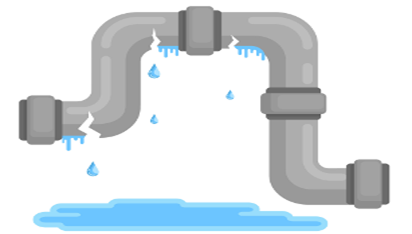Revenue leakage is the silent killer of profitability. It is not always obvious, but small cracks in your revenue operations can compound into significant losses over time. Whether you are a scaling startup or an established enterprise, chances are you are leaving money on the table. The good news? It is preventable.
This blog explores revenue leakage, how to spot it in your business, and proven strategies to stop it for good
🚨 What Is Revenue Leakage?
Revenue leakage occurs when a business earns less revenue than it should due to process inefficiencies, system gaps, billing errors, or misaligned teams. It is often unintentional—hence the term leakage—and frequently goes undetected until it is too late.
Some common causes include:
- Incorrect pricing or discounting
- Missed renewals or upsells
- Manual errors in billing or invoicing
- Poor contract or customer data management
- Lack of alignment between sales, finance, and operations
Even businesses with high growth and strong product-market fit are not immune. Without proper controls, you could be growing top-line revenue while bleeding margin out the bottom.
🔍 Step 1: Recognize the Signs of Revenue Leakage
Before you can fix revenue leakage, you need to know what to look for. Here are red flags that often signal trouble:
Unmatched Contracts and Billing
You face a problem when what you sell does not match your invoice. Common culprits include:
- Contract terms not integrated into billing systems
- Changes during negotiation not reflected downstream
- Lack of audit trails for custom deals
Overuse of Manual Processes
Spreadsheets and siloed tools may have worked early but are error-prone at scale. Manual data entry leads to:
- Incorrect invoices
- Missed revenue events
- Data loss between handoffs
High Customer Churn with No Clarity
If customers quietly slip away and your team can not pinpoint why, value may be left untapped—or incorrectly delivered.
Ineffective Discount Controls
Do your reps have free rein on discounts? Lack of guardrails can lead to over-discounting, which erodes margin and sets a poor precedent.
Disparate Data Across Teams
When sales, finance, and customer success work from different tools and metrics, it’s easy for revenue-impacting activities to fall through the cracks.
🛠️ Step 2: Pinpoint the Leakage Points
Once you suspect revenue leakage, a cross-functional audit can reveal the precise breakpoints. Focus on these five areas:
🔄 Lead-to-Cash Process
Map out your entire lead-to-cash workflow—from first customer touch to final invoice. Look for:
- Gaps in CRM to billing handoffs
- Delays in quote approvals
- Breakdowns in contract compliance
💰 Pricing & Quoting Workflows (CPQ)
Audit how your team makes pricing decisions:
- Are reps following approved pricing models?
- Are custom terms approved and tracked?
- Is there version control in quoting?
📜 Contract Lifecycle Management (CLM)
Review how contracts are stored, accessed, and monitored:
- Are there tools to track renewals, expansions, or usage-based terms?
- Is legal aligned with RevOps for custom clauses?
📊 Revenue Recognition vs. Billing
Misalignment between when you recognize revenue and when you bill leads to accounting errors:
- Are there rules in place for deferred or recurring revenue?
- Is your finance system integrated with your CRM?
🤝 Customer Success and Renewals
- Are customers renewing on time?
- Are success metrics aligned to value delivery?
- Are expansion opportunities being tracked?
🔧 Step 3: Fix the Leaks—Permanently
Finding the leaks is only half the battle. The real value comes from putting in place sustainable fixes.
✅ Implement a Revenue Operations (RevOps) Framework
RevOps combines sales, marketing, finance, and customer success with a unified strategy
Benefits include:
- A holistic view of the customer journey
- Standardized data across systems
- Process automation and visibility
⚙️ Automate Where It Matters
Invest in tools that reduce manual work and ensure data flows cleanly between departments:
- CRM integrations with billing systems
- Automated approval workflows for pricing and discounting
- Contract management systems
📉 Set Guardrails, Not Roadblocks
Create policies that allow flexibility while minimizing risk:
- Pre-approved discount thresholds
- Dynamic pricing models
- Role-based permissions for quoting
🔄 Create Closed-Loop Feedback Between Teams
Share customer feedback, renewal trends, and financial data across functions to help:
- Sales understand what closes and retains
- Finance flag revenue risks early
- CS teams deliver impactful outcomes more often
📅 Conduct Regular Revenue Audits
Treat revenue health checks like financial audits:
- Monthly or quarterly reviews of pipeline-to-payment
- Audit trails for large deals or custom pricing
- Early detection of missed renewals or usage overages
📈 The Payoff: More Revenue, Less Waste
Fixing revenue leakage is not a one-time project—it’s a mindset shift. When you proactively manage your revenue processes with clarity, controls, and cross-functional alignment, you gain:
- Improved forecasting accuracy
- Higher margins without raising prices
- Better customer experience and retention
- Scalable systems that support growth
🔚 Final Thoughts
Revenue leakage may be invisible, but its impact is real. In a competitive market, every dollar counts—and the businesses that master revenue integrity will be the ones that thrive.
Now is the time to ask: Where might we be leaking revenue—and what’s the cost of doing nothing?

Leave a Reply